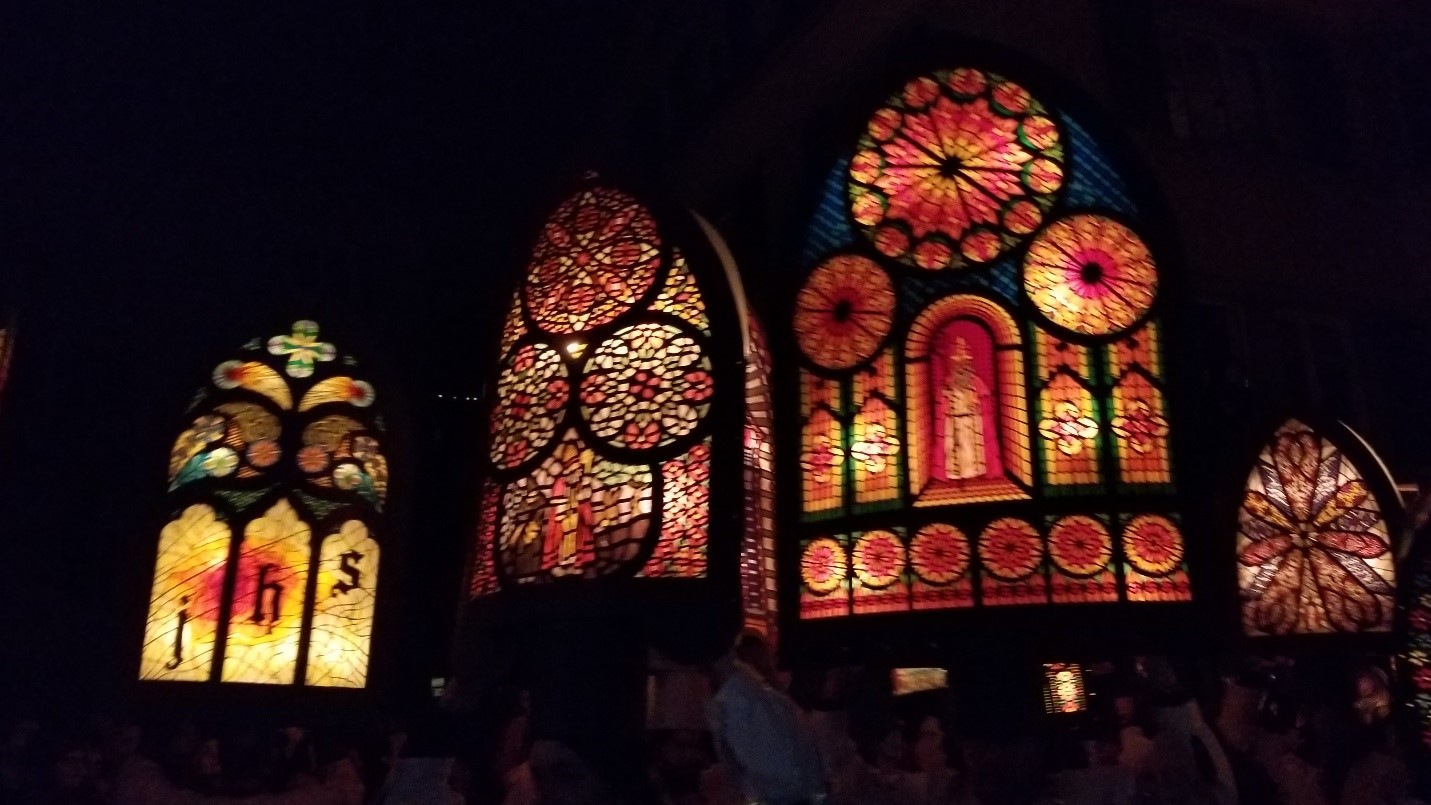Whip-cracking Christmas
Remember the Christmas carol that mentions a “whip that cracks”? That always seemed rather strange. What kid would request a whip for Christmas? Apparently, most every kid who lives in Kussnacht; it’s the “whip-cracking capital of Switzerland” as far as I can tell.
Sailing to Kussnacht for Klausjagen
Last night I sailed across Lake Lucerne to the medieval village of Kussnacht am Rigi. Each December 5 (the night before St Nicholas Day), the entire population turns out to scare off evil spirits and celebrate the arrival of Christmas. Their centuries-old tradition—both rowdy and inspirational—is unforgettable. Klausjagen (“Chasing Santa”) is a ritual that happens once a year and deserves to be experienced.
Commemorative Chocolates to Nibble On
After disembarking, I nudge my way into town through crowded streets and stop at Schwarzenbergen Konditorei to purchase the tasty commemorative chocolates that show off the classic iffelen (more on those later). A must-have as they’re both delicious and a great keepsake of the evening.

High Decibel Whip-cracking
After positioning myself on the parade route about 8:00pm, the whip-cracking begins in earnest. The brawny Swiss dairy farmers have developed their skill to such precision that the sound of the whip cracking is almost deafening. Really. They compete for the loudest crack and the most cracks in succession. The crowd roars in approval. As I watch the long leather whips I wince and feel certain someone is going to be injured. But not so. These farmers are as accurate as they are strong. Strangely, the locals don’t even flinch.
Bizarre Kussnacht Tradition
At 8:15pm, the village elders do the unthinkable—they cut the lights. All of them. The city center plunges into complete darkness. This signals that the official parade is about to begin. Now the whip-crackers seem even more dangerous. They must have incredible night vision as they stride eerily up the pitch-black parade route, cracking away. Parade monitors push the crowd back, but I still cringe at each thundering clap. I can’t help but wonder how an activity this loud and dangerous wasn’t shut down years ago. But the folks here love it. And the whip-cracking is just the beginning.
Iffelen Float Down the Street
As the thunderous whip-cracking dies down, I breathe a sigh of relief. As I gaze down the street, I immediately gasp in awe. The magical glowing iffelen, the stars of the show, bob and weave toward me in magnificence and majesty. A multi-colored tidal wave of radiant beauty. White-robed men and boys, balance a hand-made colorful paper and wood column on their heads, with flickering candles providing the illumination. In the style of stained glass, these colorful head pieces spin and twirl in the street atop their owners. Hundreds of them. Difficult to describe. Impossible to forget.
Darkness Is Necessary
The darkness now makes sense. It allows the eye-catching detailed designs their due attention and admiration. Spontaneous applause accompanies the tallest and most intricate designs. How each dancer keeps his luminary upright on his head (with some being upwards of 7ft tall) is a mystery. Even more mysterious is how they keep them from bursting into flames as they dance. I’m awestruck.
St Nicholas Arrives
As the last of the iffelen pass, I hear a strange haunting tune wafting through the frosty air. An assembly of farmers with brass instruments (from trumpets to tubas) marches past playing a melody that must be hundreds of years old. Just three notes repeated in a seven-note pattern. I guarantee you won’t be downloading this one. Almost a dirge-like tune, the “Santa Song” is played every year right before the parade appearance of the torch-bearers and St Nicholas with four of his helpers, all named Schmutzli. If you blink, you may miss Santa. You’ve been warned.

Hundreds of Clanging Bells
Then it’s the clanging of the Great Trychlen Bells. Hundreds of them. This is where your hearing takes a beating (and ear plugs could be helpful). The bells are pulled from farms, sheds, walls and stalls—maybe even from a local cow. This procession needs lots of bells. The sound is ear-piercing and it’s easy to see why evil spirits would choose to depart once these bell-ringers start down the center of town. The white-cloaked farmers sling the huge bell from side to side, banging them against their thighs (that’s got to hurt after a while).
Tooting Horns
The parade concludes with a group of men tooting cow horns. Each has a slightly different sound, but only one note (not the same one, I might add). The single short blasts sound like the cacophony of a New Year’s Eve party at midnight.
Dedication of the Townsfolk
All this clanging, marching, twirling, candle-lighting, and tooting requires immense effort, coordination, and participation by the 1500 resident participants of Kussnacht. It’s done once annually in hopes of warding off evil spirits prior to the celebration of the birth of Christ. The raucous tradition, with pre-Christian pagan roots, ran afoul of church authorities and was banned for a period of time in the 18th century. But it was Christianized with the addition of the iffelen and has continued in its current form since the late 19th century.
Consider an Alpenwild Christmas Tour
Attending Klausjagen is easy if you book Alpenwild Scenic Alps by Rail: Christmas Edition. The tour, which includes a fondue dinner and a round trip cruise from Luzern, is always a highlight. Klausjagen only happens once a year. Don’t miss it.
- Are Helicopters Essential for Supplying Swiss Mountain Huts? - August 12, 2024
- How To Minimize Your Carbon Footprint When You Travel - May 6, 2024
- Climate Change and Its Toll on the Alpine Ecosystem - March 29, 2024


